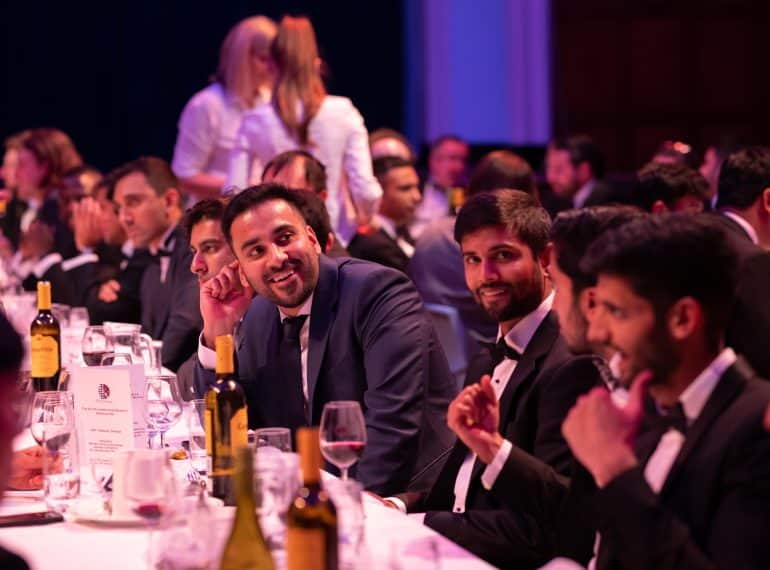
Elizabethans from every decade from the 1940s through to the 2020s turned out to the 125th Old Elizabethans Association Annual Dinner.
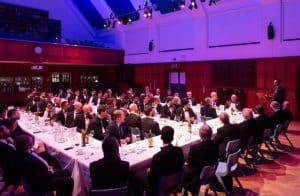 With 76 in attendance, the event in the Main School Hall was the first such formal occasion since the start of the pandemic.
With 76 in attendance, the event in the Main School Hall was the first such formal occasion since the start of the pandemic.
As has become traditional, guests included the ‘ten-year leavers’ – those who were pupils from 2004-2011: their 30-strong group occupied a prime position in the middle of the tables. Other groups booked together, too – such as OEs from the 1978-1985 cohort, and some of those who left in 2004/5.
The current decade was represented at the dinner by the 2021 School Captain, Siddhant Kansal, and three members of his prefect team.
And the ranks of diners were further swelled by several members of the School’s new 450 Club.
Headmaster Neil Enright said: “Being an Elizabethan is not just about the seven years that boys typically spend here – it’s about joining a community and network offering lifelong friendship and support. With such good numbers and with old boys of all ages coming along, this year’s dinner was a striking demonstration that all who have attended our School really are Elizabethans for life.
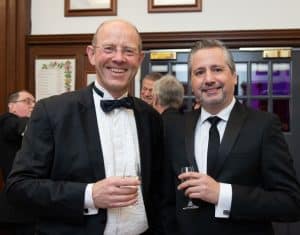 “Such enjoyable social occasions are important in helping OEs keep in touch and re-connect with each other and with us at the School. Pandemic-permitting, I look forward to many similar events in the future and to our providing alumni with other opportunities for them to get involved in supporting the School and the current pupils in various ways.”
“Such enjoyable social occasions are important in helping OEs keep in touch and re-connect with each other and with us at the School. Pandemic-permitting, I look forward to many similar events in the future and to our providing alumni with other opportunities for them to get involved in supporting the School and the current pupils in various ways.”
In his speech, Mr Enright explained why the 2021 dinner had additional significance for him: “This year is itself an anniversary for me personally, marking a decade as Headmaster. It is also a milestone for our group of ten-year leavers, who I’m pleased to see in typically good numbers and high spirits tonight. There is, in fact, strong representation from my last A-level Geography group among them.”
He gave initial feedback on the recent independent survey of alumni commissioned by the School: “It has reinforced that the overwhelming majority are proud to have been to QE and think that an education here has had a lasting positive impact. We want to ensure that this remains the case for you and for future generations of alumni.”
 He gave a special welcome to the 450 Club members: named in anticipation of the 450th anniversary of the School in 2023, the club is open to any alumnus who commits to donating £450 to the School before September 2022.
He gave a special welcome to the 450 Club members: named in anticipation of the 450th anniversary of the School in 2023, the club is open to any alumnus who commits to donating £450 to the School before September 2022.
The evening began with a drinks reception at 7.15pm, which took place in the Crush Hall. This was followed by dinner and then a series of toasts and speeches, before guests went back to mingling and networking.
OE Association President Eric Houston, who hosted the dinner on behalf of the Association, presented Siddhant with the Eric Shearly Memorial Award for his outstanding service and contribution to the School.
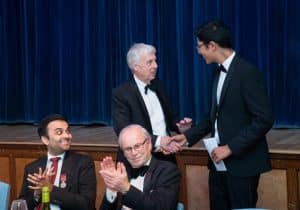 Mr Houston, who is also a Governor, taught at the School from 1976. He was Second Master from 1999 until his retirement in 2010, this period largely overlapping with the 1999-2011 headmastership of Dr John Marincowitz, who was also in attendance at the dinner.
Mr Houston, who is also a Governor, taught at the School from 1976. He was Second Master from 1999 until his retirement in 2010, this period largely overlapping with the 1999-2011 headmastership of Dr John Marincowitz, who was also in attendance at the dinner.
The guest speaker Dhruv Chhatralia (OE 1996-2003) gave the after-dinner speech, proposing the toast to the School. A City lawyer, Dhruv is a regular speaker on Hinduism, on the benefits of yoga and on the importance of strong mental health, and is the author of many books on Hinduism. He was awarded the British Empire Medal in the 2020 New Year’s Honours ‘for services to Hinduism and to developing young people’.
- Alumni can view a full gallery of photos of the dinner on their QE Connect online network.


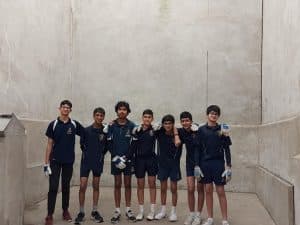 Seven Year 10 boys, who took up the game last year, headed off to Eton College for the Eton Fives Nationals Competition for novices.
Seven Year 10 boys, who took up the game last year, headed off to Eton College for the Eton Fives Nationals Competition for novices.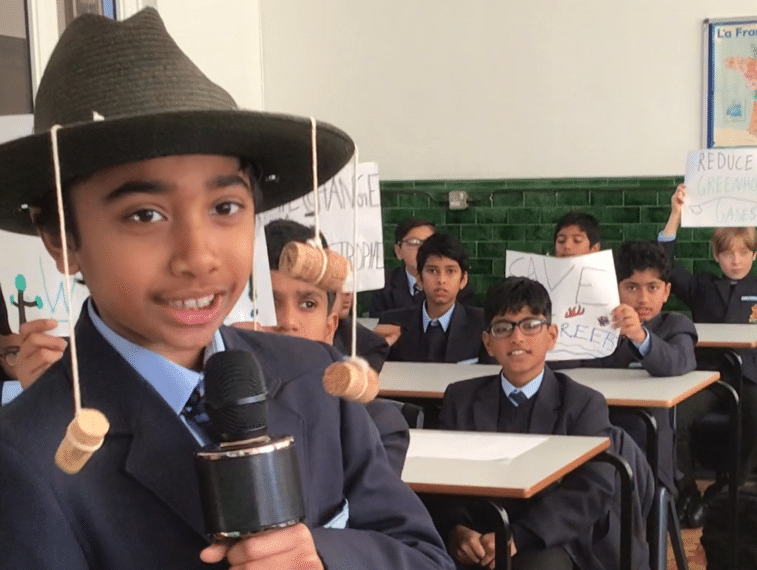
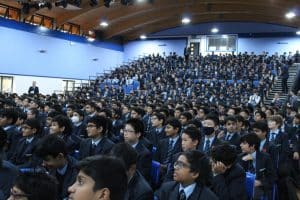 All boys from Years 7–10 took part, with each form group representing a country, producing a short video and putting forward a delegate in the debates. These delegates fought their corner passionately, challenging each other’s records – although perhaps not always with the delicate diplomacy expected at a global summit!
All boys from Years 7–10 took part, with each form group representing a country, producing a short video and putting forward a delegate in the debates. These delegates fought their corner passionately, challenging each other’s records – although perhaps not always with the delicate diplomacy expected at a global summit!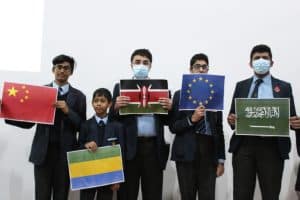 Nations had been put into thematic groups – focusing on areas such as cities, forest, or oceans – and urged to discuss, to negotiate and to attempt to come to a joint decision. Each nation then had the opportunity to speak, with many focussing, on the one hand, on their own context – including their level of economic development and current pollution levels – and, on the other, making the case that their own climate targets (such as net zero carbon dates) were, in fact, ambitious.
Nations had been put into thematic groups – focusing on areas such as cities, forest, or oceans – and urged to discuss, to negotiate and to attempt to come to a joint decision. Each nation then had the opportunity to speak, with many focussing, on the one hand, on their own context – including their level of economic development and current pollution levels – and, on the other, making the case that their own climate targets (such as net zero carbon dates) were, in fact, ambitious.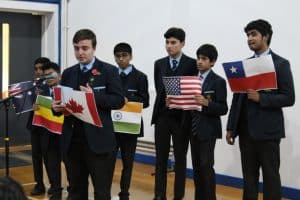 “China’s delegate did, though, make a powerful argument that a significant proportion of China’s emissions were producing and exporting products being bought by those in other parts of the world (including the West), who were, in effect, therefore outsourcing their emissions.
“China’s delegate did, though, make a powerful argument that a significant proportion of China’s emissions were producing and exporting products being bought by those in other parts of the world (including the West), who were, in effect, therefore outsourcing their emissions.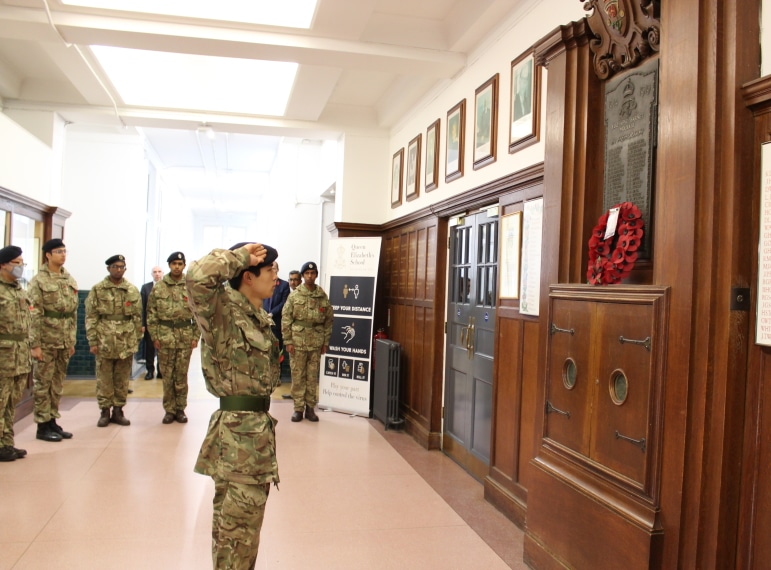
 The cadets paraded into the Crush Hall, the area just outside the Main Hall, at 10.55am to take up their positions ahead of the 11am silence. They were led by Cadet Staff Sergeant Lucas Lu, of Year 13, who gave the commands and laid the wreath at the World War I memorial on behalf of the CCF and School.
The cadets paraded into the Crush Hall, the area just outside the Main Hall, at 10.55am to take up their positions ahead of the 11am silence. They were led by Cadet Staff Sergeant Lucas Lu, of Year 13, who gave the commands and laid the wreath at the World War I memorial on behalf of the CCF and School.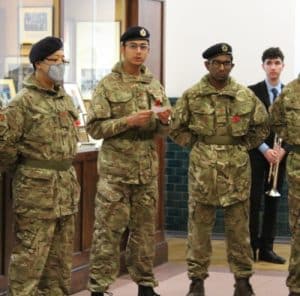 “In saluting th0se Elizabethans from generations past who gave their lives for a cause greater than themselves, we firstly pay tribute to their sacrifice and secondly encourage our current pupils to reflect on the School’s long and continuing tradition of service.”
“In saluting th0se Elizabethans from generations past who gave their lives for a cause greater than themselves, we firstly pay tribute to their sacrifice and secondly encourage our current pupils to reflect on the School’s long and continuing tradition of service.”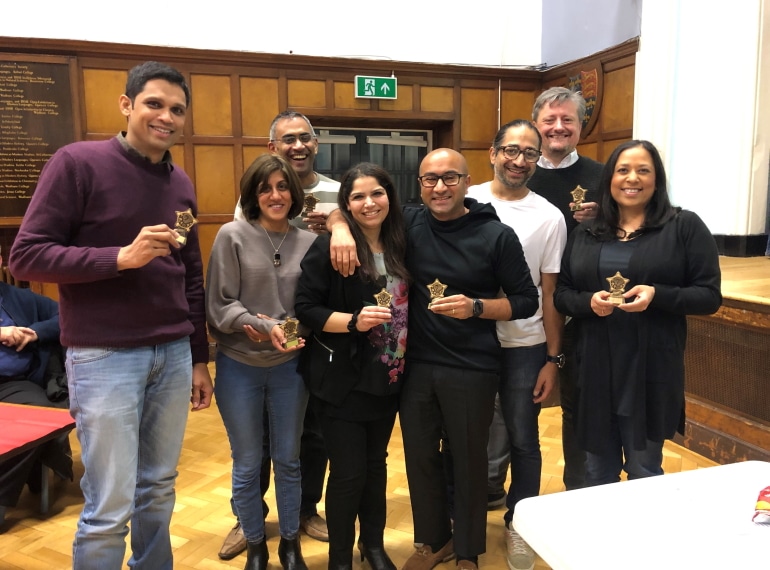
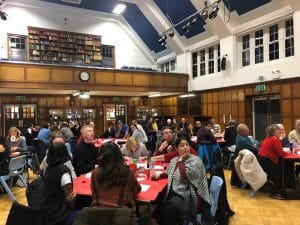 Headmaster Neil Enright said: “After such a long enforced break, it was wonderful to have people back at the School enjoying themselves and to see such a sweep of competitors from across our whole Elizabethan family.
Headmaster Neil Enright said: “After such a long enforced break, it was wonderful to have people back at the School enjoying themselves and to see such a sweep of competitors from across our whole Elizabethan family.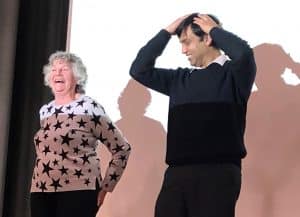 Team 1 included a number of current teachers, together with partners, while Team 2 comprised Old Elizabethans and Team 5 included former members of staff. Participants enjoyed drinks and snacks from the bar, while a fundraising raffle was also held during the event in the Main School Hall.
Team 1 included a number of current teachers, together with partners, while Team 2 comprised Old Elizabethans and Team 5 included former members of staff. Participants enjoyed drinks and snacks from the bar, while a fundraising raffle was also held during the event in the Main School Hall.